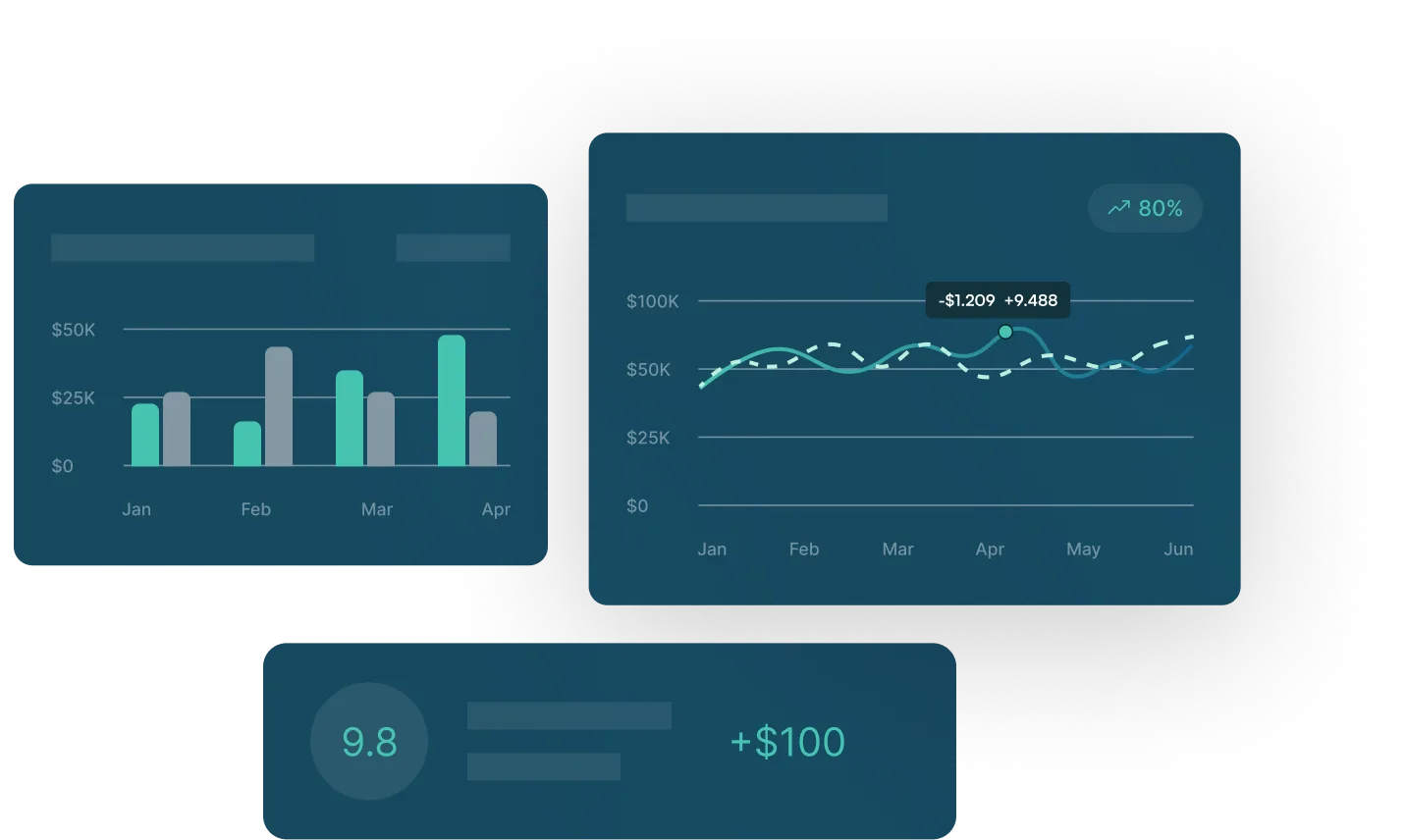FASB Expands Fair Value Hedge Accounting: Introducing the Portfolio Method
.jpeg)
.jpeg)
On March 28, the Financial Accounting Standards Board (FASB) issued ASU 2022-01 to improve and expand fair value hedge accounting. Here’s what this update means for corporates and other organizations using the last-of-layer strategy.
Prior to 2017, it was difficult for entities to achieve fair value hedge accounting for interest rate risk hedges of portfolios of prepayable financial assets. FASB issued ASU 2017-12, of which one of the targeted improvements was to make hedge accounting more accessible for institutions like credit unions.
About five years into this new industry standard, practitioners have gained a lot of experience with hedge accounting. This increase in comfort with derivatives as an interest rate risk management strategy has led entities and practitioners to seek improvement, recognizing opportunities for even more coverage.
The FASB has responded with ASU 2022-01. Here is a brief overview of the amendments in this ASU.
#1. Expanding Last-of-Layer
ASU 2017-12 introduced the last-of-layer method. Financial institutions applied this derivative accounting strategy on a portfolio of prepayable fixed-rate assets, exchanging the fixed characteristics for variable to match variable rate sources of funding. In this strategy, entities used a pay-fixed, receive-variable interest rate swap to exchange the fixed rate on a portion of a pool of pre-payable fixed-rate assets for a variable rate.
ASU 2022-01 expands the current last-of-layer method, which has until this point permitted only one hedged layer. Now, multiple hedged layers of a single closed portfolio may be used. To reflect this expansion, this method has been renamed the portfolio layer method.
#2. Expanding the Scope
Previously, the last-of-layer method only allowed prepayable financial assets. The portfolio layer method expands this scope to include non-prepayable financial assets.
#3. Specifying Hedging Instruments
Practitioners asked the Board for clarification on what types of hedging instruments are allowed when a single hedged layer is designated versus multiple hedged layers.
In this ASU, the FASB specified that eligible hedging instruments in a single-layer hedge may include spot-starting or forward-starting constant-notional swaps, or spot or forward-starting amortizing-notional swaps. The ASU also clarifies that the number of hedged layers (that is, single or multiple) corresponds with the number of hedges designated.
#4. Providing Accounting & Disclosure Guidance
Previous guidance on last-of-layer did not explicitly address the accounting for basis adjustments other than when the hedge is partially or fully designated. There also was no explicit guidance on how to recognize and present in the income statement the portion of the basis adjustment associated with a hedged layer if the closed portfolio falls below the amount of the hedged layer.
To address these issues, ASU 2022-01 provides additional guidance on accounting and disclosure of hedge basis adjustments. This guidance is applicable to the portfolio layer method whether a single hedged layer or multiple hedged layers are designated.
#5. Specifying Credit Losses
Finally, practitioners sought clarification on how the accounting for last-of-layer hedge basis adjustments interacts with the guidance on credit losses. The update specifics how they should be considered when determining credit losses for the assets included in the closed portfolio.
Conclusion
ASU 2022-01 expands the current last-of-layer method to allow multiple hedged layers on a single closed portfolio. For corporates and others using last-of-layer (especially credit unions) who are currently trading and working on 10-Qs, it’s important to review how this impacts your 10-Q and designations for new trades.
FASB Expands Fair Value Hedge Accounting: Introducing the Portfolio Method
On March 28, the Financial Accounting Standards Board (FASB) issued ASU 2022-01 to improve and expand fair value hedge accounting. Here’s what this update means for corporates and other organizations using the last-of-layer strategy.
Prior to 2017, it was difficult for entities to achieve fair value hedge accounting for interest rate risk hedges of portfolios of prepayable financial assets. FASB issued ASU 2017-12, of which one of the targeted improvements was to make hedge accounting more accessible for institutions like credit unions.
About five years into this new industry standard, practitioners have gained a lot of experience with hedge accounting. This increase in comfort with derivatives as an interest rate risk management strategy has led entities and practitioners to seek improvement, recognizing opportunities for even more coverage.
The FASB has responded with ASU 2022-01. Here is a brief overview of the amendments in this ASU.
#1. Expanding Last-of-Layer
ASU 2017-12 introduced the last-of-layer method. Financial institutions applied this derivative accounting strategy on a portfolio of prepayable fixed-rate assets, exchanging the fixed characteristics for variable to match variable rate sources of funding. In this strategy, entities used a pay-fixed, receive-variable interest rate swap to exchange the fixed rate on a portion of a pool of pre-payable fixed-rate assets for a variable rate.
ASU 2022-01 expands the current last-of-layer method, which has until this point permitted only one hedged layer. Now, multiple hedged layers of a single closed portfolio may be used. To reflect this expansion, this method has been renamed the portfolio layer method.
#2. Expanding the Scope
Previously, the last-of-layer method only allowed prepayable financial assets. The portfolio layer method expands this scope to include non-prepayable financial assets.
#3. Specifying Hedging Instruments
Practitioners asked the Board for clarification on what types of hedging instruments are allowed when a single hedged layer is designated versus multiple hedged layers.
In this ASU, the FASB specified that eligible hedging instruments in a single-layer hedge may include spot-starting or forward-starting constant-notional swaps, or spot or forward-starting amortizing-notional swaps. The ASU also clarifies that the number of hedged layers (that is, single or multiple) corresponds with the number of hedges designated.
#4. Providing Accounting & Disclosure Guidance
Previous guidance on last-of-layer did not explicitly address the accounting for basis adjustments other than when the hedge is partially or fully designated. There also was no explicit guidance on how to recognize and present in the income statement the portion of the basis adjustment associated with a hedged layer if the closed portfolio falls below the amount of the hedged layer.
To address these issues, ASU 2022-01 provides additional guidance on accounting and disclosure of hedge basis adjustments. This guidance is applicable to the portfolio layer method whether a single hedged layer or multiple hedged layers are designated.
#5. Specifying Credit Losses
Finally, practitioners sought clarification on how the accounting for last-of-layer hedge basis adjustments interacts with the guidance on credit losses. The update specifics how they should be considered when determining credit losses for the assets included in the closed portfolio.
Conclusion
ASU 2022-01 expands the current last-of-layer method to allow multiple hedged layers on a single closed portfolio. For corporates and others using last-of-layer (especially credit unions) who are currently trading and working on 10-Qs, it’s important to review how this impacts your 10-Q and designations for new trades.
.jpeg)
See GTreasury in Action
Get connected with supportive experts, comprehensive solutions, and untapped possibility today.





























.png)





.png)
.png)







.png)












.jpeg)



.jpeg)







.jpeg)

.jpeg)





.jpeg)


.jpeg)

.jpeg)








.jpeg)


.jpg)





.jpg)

.jpg)





